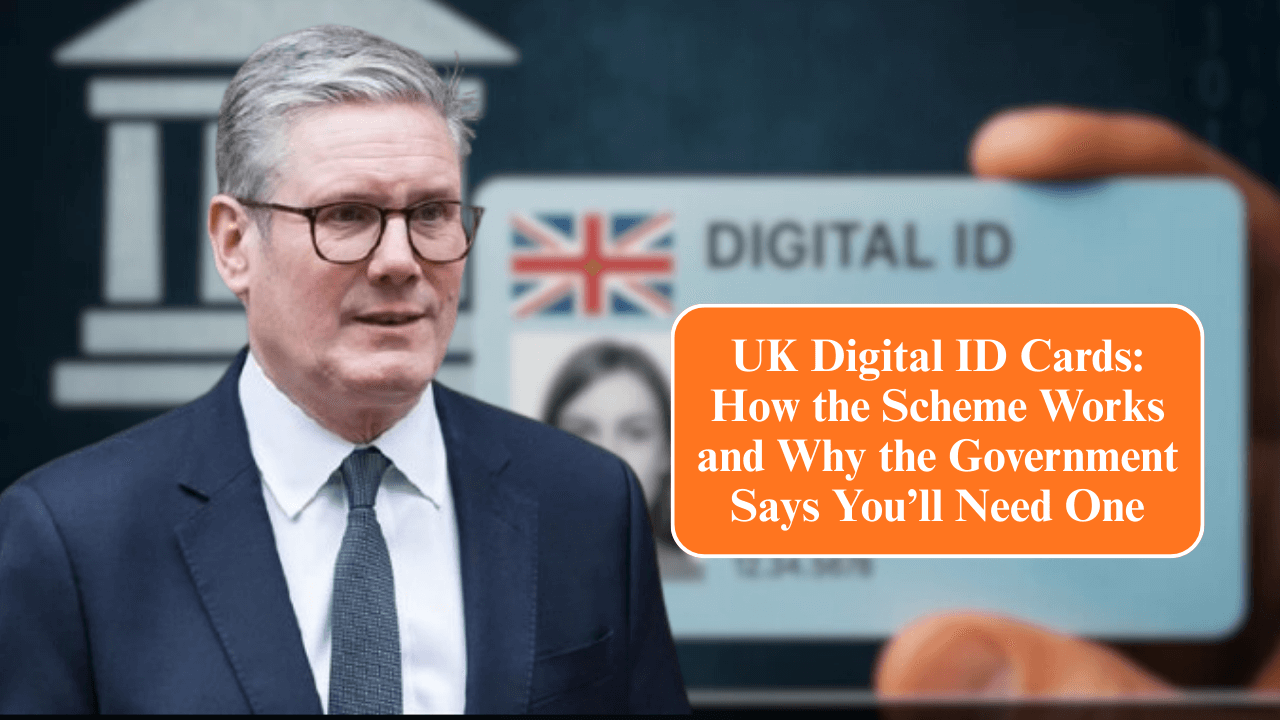The UK government is planning to introduce digital ID cards, a move that could transform how residents prove their identity in everyday life. From accessing public services to verifying age or identity online, these digital ID cards aim to make life simpler and safer. But what exactly are they, how will they work, and why is the government encouraging people to get one? Let’s explore.
What Is a Digital ID Card?
A digital ID card is essentially a secure, electronic form of identification. Unlike traditional paper documents or plastic cards, digital IDs are stored electronically on a smartphone or other digital devices. They can be used to prove your identity in a variety of situations, both online and offline. The UK government says this approach will make identity verification faster, safer, and more reliable.
How Does the Digital ID Scheme Work?
The digital ID scheme is designed to be easy to use while maintaining high levels of security. Here’s a step-by-step look at how it works:
- Registration
To get a digital ID, residents must register through an official platform. This involves submitting personal details and verifying identity documents such as passports, driving licences, or birth certificates. - Verification
Advanced technology, including facial recognition and biometric verification, ensures the individual is who they claim to be. This process reduces the risk of fraud or identity theft. - Issuing the Digital ID
Once verified, the digital ID is issued and stored securely on your device. It can be accessed through a government-approved app. - Using the Digital ID
Users can present their digital ID when accessing services such as banking, healthcare, or government services. It may also be used for age verification when purchasing age-restricted products.
Security Measures in Place
Security is a top priority for the UK digital ID scheme. The government has stated that personal data will be encrypted and stored securely. Multi-layer authentication will prevent unauthorised access, and users will have control over what information they share and with whom. Unlike traditional ID documents, digital IDs can’t be easily lost, stolen, or forged.
Why the UK Government Says You’ll Need One
The government believes that digital ID cards will become essential for many aspects of daily life. Here’s why:
- Fraud Prevention
Identity fraud is a growing concern in the UK. Digital ID cards, with their advanced security measures, can significantly reduce cases of identity theft. - Convenience
Carrying multiple ID documents is inconvenient. A digital ID can store multiple credentials in one secure place, making life easier. - Access to Services
As more services move online, having a verified digital identity may become necessary to access certain government or financial services. - Age Verification
Digital IDs provide a reliable way to prove your age, particularly when buying age-restricted goods or accessing age-limited services online.
Who Can Get a Digital ID?
The scheme will initially be available to UK residents who are 18 or older. Over time, it may be extended to include younger residents and visitors. The government plans to make the registration process straightforward so that most residents can easily obtain a digital ID.
Benefits of Digital ID Cards
Digital ID cards offer several benefits:
- Reduced Fraud Risk: Advanced encryption and biometric verification make it harder for criminals to steal or forge identities.
- Simplified Verification: One digital ID can replace multiple physical documents.
- Better Access to Services: Residents can access public services more easily and quickly.
- Environmentally Friendly: Reduces the need for paper-based identification.
Potential Concerns
While the benefits are clear, some people have expressed concerns about privacy and security. Critics worry about government surveillance and potential misuse of personal data. The government insists that privacy safeguards will be built into the system and that users will control their information.
How the Digital ID Will Impact Daily Life
Digital ID cards could change how UK residents interact with services every day:
- Banking: Faster account opening and secure transactions.
- Healthcare: Quick access to medical records without carrying multiple documents.
- Travel: Easier verification at airports and border control.
- Retail: Simple proof of age for online purchases.
Steps to Get a Digital ID
- Download the official app.
- Register using personal information and ID documents.
- Verify your identity with biometric authentication.
- Receive your digital ID and start using it securely.
What Experts Say
Technology experts have praised the UK digital ID initiative for its potential to streamline verification and reduce fraud. However, they emphasise the importance of robust cybersecurity measures and user education to ensure the system is used safely.
Future of Digital ID in the UK
Digital IDs are likely to become a standard form of identification in the UK, similar to driving licences or passports. As more services go digital, having a verified online identity will become increasingly important. Experts predict that digital IDs could eventually replace physical ID cards entirely.
Conclusion
The UK digital ID card scheme represents a major shift in how residents prove their identity. Offering convenience, enhanced security, and reduced fraud risk, it could become an essential tool for everyday life. While privacy concerns remain, the government has promised strong safeguards and user control over personal data. For residents, understanding how the digital ID works and why it may soon be necessary is the first step towards embracing this new technology.
